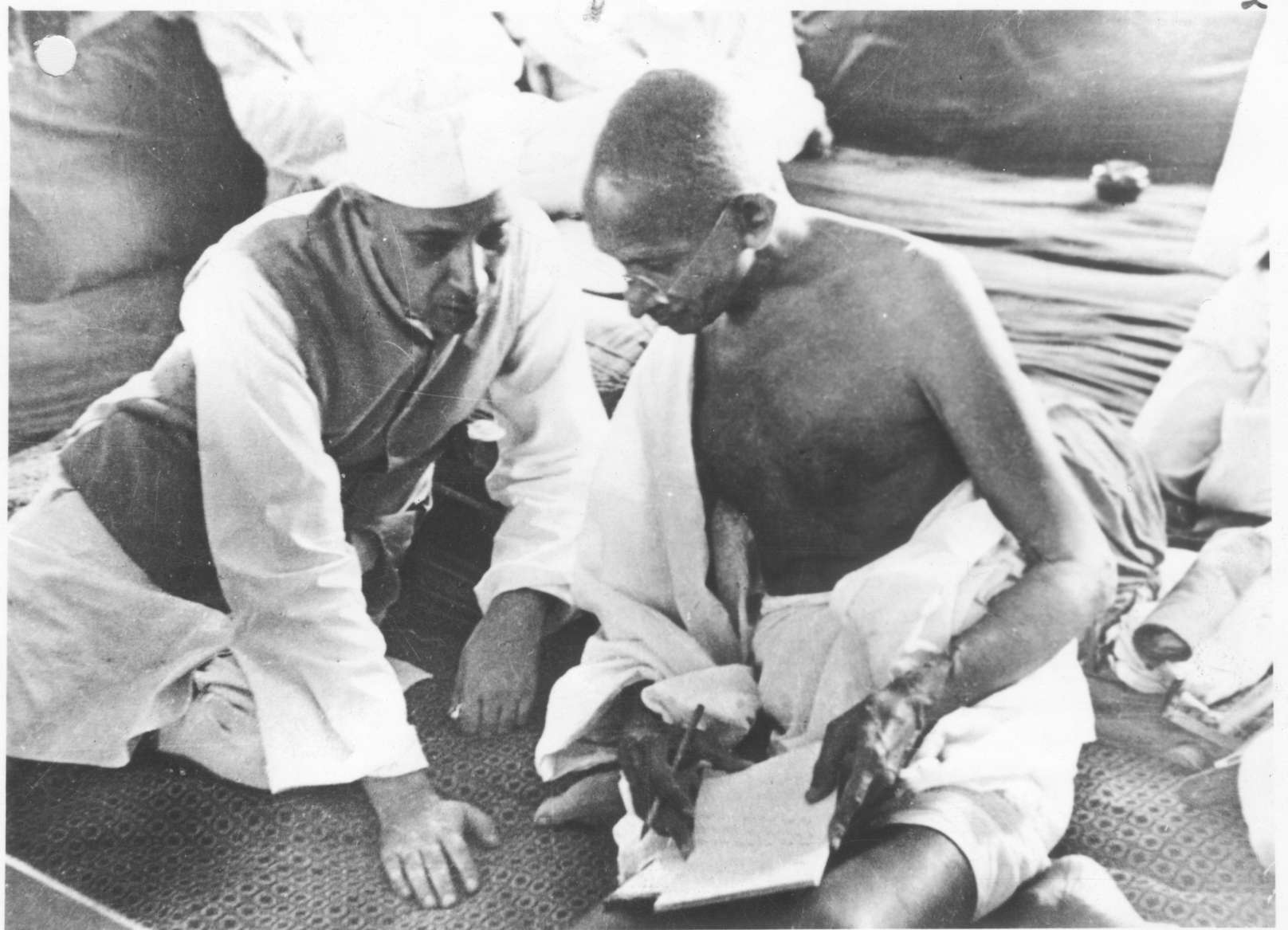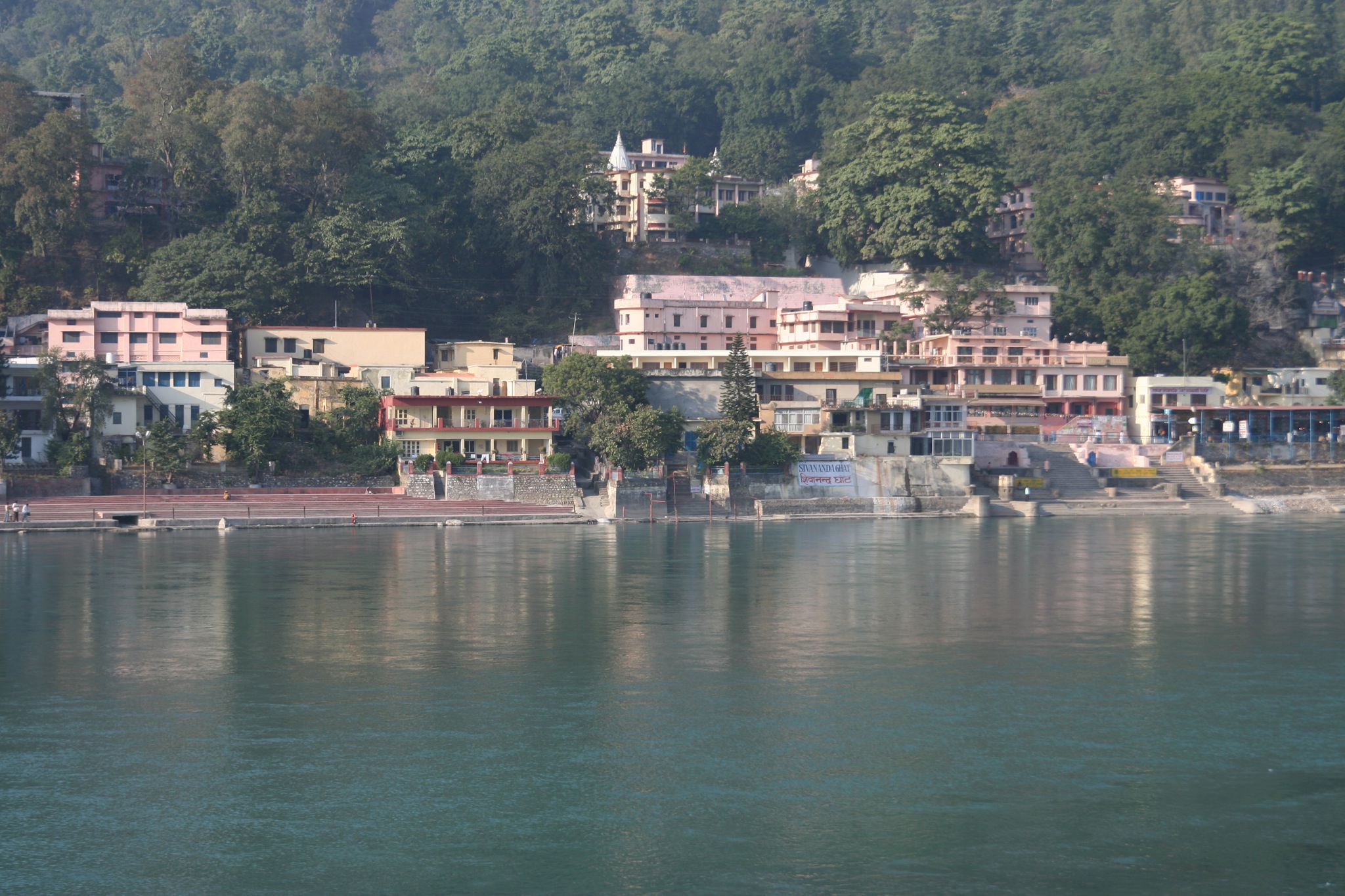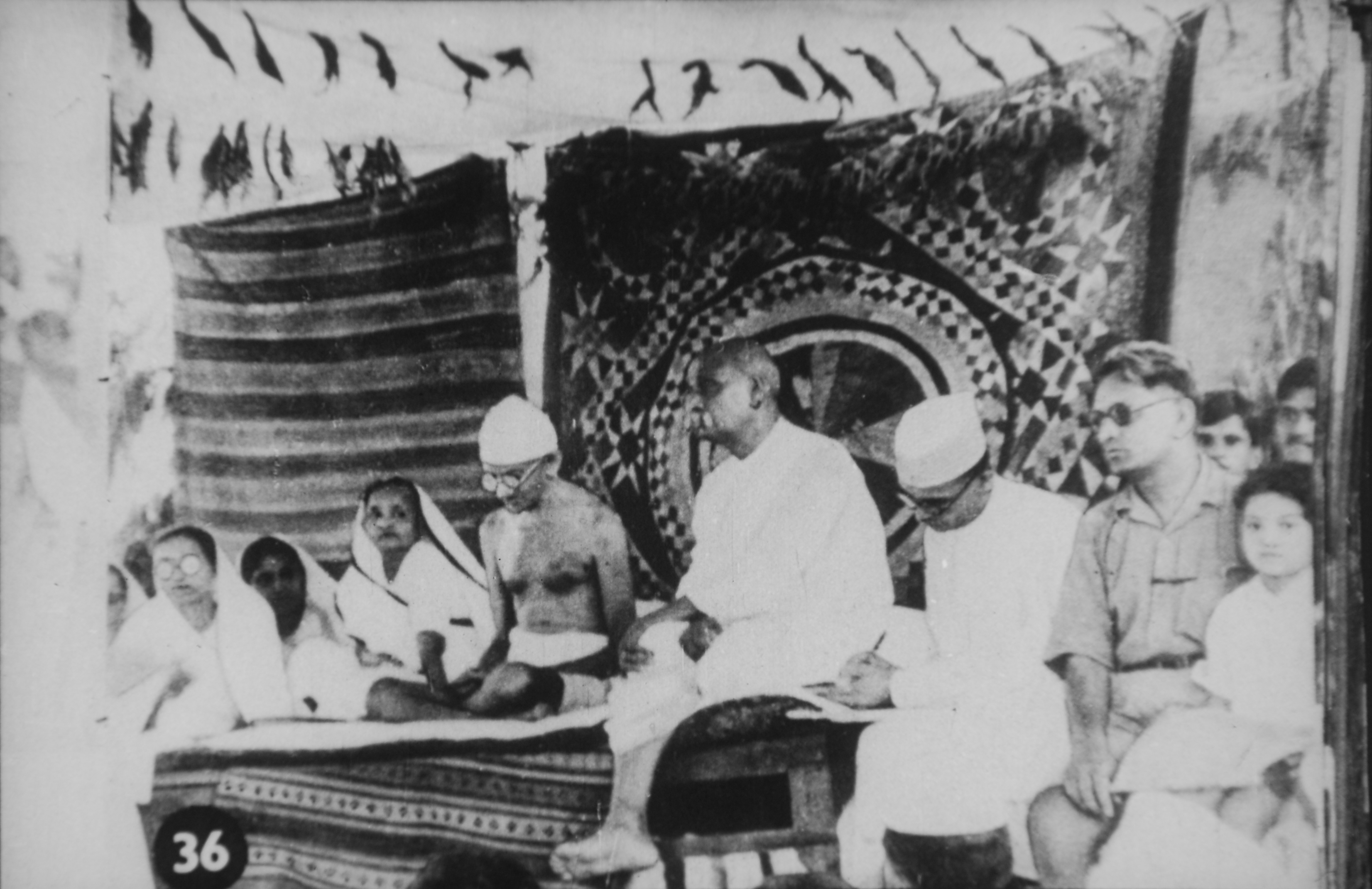|
Swami Anand
Swami Anand (1887 – 25 January 1976) was a monk, a Gandhian activist and a Gujarati writer from India. He was the manager of Gandhi's publications such as ''Navajivan'' and ''Young India'' and inspired Gandhi to write his autobiography, ''The Story of My Experiments with Truth''. He wrote sketches, memoir, biographies, philosophy, travelogues and translated some works. Biography Early life Swami Anand was born Himmatlal on 8 September 1887 at Shiyani village near Wadhwan to Ramchandra Dave (Dwivedi) and Parvati in Audichya Brahmin family. His father was a teacher. He was among seven siblings. He was brought up and educated in Bombay. At the age of ten, he left home in opposition to marriage and due to an offer by a monk to show him God. He wandered for three years with several different monks. He took a vow of renunciation while still in his teens, took on the name Swami Anand and became a monk with the Ramakrishna Mission. He also lived at the Advaita Ashram where he s ... [...More Info...] [...Related Items...] OR: [Wikipedia] [Google] [Baidu] |
Wadhwan
Wadhwan, also spelled Vadhwan, is a city and a municipality in Surendranagar district in the Indian state of Gujarat. Located on the banks of the Bhogavo River, around 3 km from Surendranagar and 111 km from Ahmedabad, Wadhwan is a known location for its old world royal charm and serene space with a life and culture of its own. It was historically the capital of Wadhwan State. Demographics India census, Wadhwan city had a population of 61,739. Males constitute 52% of the population and females 48%. Wadhwan city has an average literacy rate of 71%, higher than the national average of 59.5%: male literacy is 78%, and female literacy is 63%. In Wadhwan city, 12% of the population is under 6 years of age. Geography It is located on the bank of the dry Bhogavo River. History The name "Wadhwan" is said to derive from "Vardhmānpur", after Vardhamana, also known as Mahavira, the 24th Tirthankar of Jainism. According to legend, the site of Wadhwan was originally a pl ... [...More Info...] [...Related Items...] OR: [Wikipedia] [Google] [Baidu] |
Navjivan (newspaper)
''Navjivan India'' (Hindi: India) is an Indian newspaper published by The Associated Journals Ltd who have been publishing the daily ''Navjivan'' since 1 November 1947. Prior to this, a newspaper called ''Navjivan'' was published by Indian activist and leader Mahatma Gandhi, and The Associate Journals started publishing ''Navjivan'' with his permission. Similar to publications like the ''National Herald'' and ''Qaumi Awaz'', ''Navajivan'' was also started with the intention to promote the principles of Mahatma Gandhi's Indian independence movement and Jawaharlal Nehru’s vision of modern India. The main objective of the newspaper was to inform and influence readers who supported the creation of democratic, liberal, and modern India. The aim of the newspaper was to speed up the propagation of the values of Gandhi: the interest in modernization, democracy, justice reform, liberal social harmony of the independence movement. History The newspaper, ''Navajivan,'' the de facto pr ... [...More Info...] [...Related Items...] OR: [Wikipedia] [Google] [Baidu] |
Sialkot
Sialkot ( ur, ) is a city located in Punjab, Pakistan. It is the capital of Sialkot District and the 13th most populous city in Pakistan. The boundaries of Sialkot are joined with Jammu (the winter capital of Indian administered Jammu and Kashmir) in the north east, the districts of Narowal in the southeast, Gujranwala in the southwest and Gujrat in the northwest. Sialkot is believed to be the successor of ancient Sagala, the capital of the Madra kingdom razed by Alexander the Great in 326 BCE, and then made capital of the Indo-Greek kingdom by Menander I in the 2nd century BCE—a time during which the city greatly prospered as a major center for trade and Buddhist thought. In 6th century, it was again made capital of the Taank Kingdom, which ruled Punjab for the next two centuries. Sialkot continued to be a major political centre until it was eclipsed by Lahore around the turn of the first millennium. The city rose again in prominence during the British era and is now one ... [...More Info...] [...Related Items...] OR: [Wikipedia] [Google] [Baidu] |
Partition Of India
The Partition of British India in 1947 was the Partition (politics), change of political borders and the division of other assets that accompanied the dissolution of the British Raj in South Asia and the creation of two independent dominions: Dominion of India, India and Dominion of Pakistan, Pakistan. The Dominion of India is today the India, Republic of India, and the Dominion of Pakistan—which at the time comprised two regions lying on either side of India—is now the Pakistan, Islamic Republic of Pakistan and the Bangladesh, People's Republic of Bangladesh. The partition was outlined in the Indian Independence Act 1947. The change of political borders notably included the division of two provinces of British India, Bengal Presidency, Bengal and Punjab Province (British India), Punjab. The majority Muslim districts in these provinces were awarded to Pakistan and the majority non-Muslim to India. The other assets that were divided included the British Indian Army, ... [...More Info...] [...Related Items...] OR: [Wikipedia] [Google] [Baidu] |
Quit India Movement
The Quit India Movement, also known as the August Kranti Movement, was a movement launched at the Bombay session of the All India Congress Committee by Mahatma Gandhi on 8th August 1942, during World War II, demanding an end to British rule in India. After the failure of the Cripps Mission to secure Indian support for the British war effort, Gandhi made a call to ''Do or Die'' in his Quit India movement delivered in Bombay on 8 August 1942 at the Gowalia Tank Maidan. The All India Congress Committee launched a mass protest demanding what Gandhi called "An Orderly British Withdrawal" from India. Even though it was at war, the British were prepared to act. Almost the entire leadership of the Indian National Congress was imprisoned without trial within hours of Gandhi's speech. Most spent the rest of the war in prison and out of contact with the masses. The British had the support of the Viceroy's Council, of the All India Muslim League, the Hindu Mahasabha, the princely s ... [...More Info...] [...Related Items...] OR: [Wikipedia] [Google] [Baidu] |
1934 Nepal–Bihar Earthquake
Events January–February * January 1 – The International Telecommunication Union, a specialist agency of the League of Nations, is established. * January 15 – The 8.0 Nepal–Bihar earthquake strikes Nepal and Bihar with a maximum Mercalli intensity of XI (''Extreme''), killing an estimated 6,000–10,700 people. * January 26 – A 10-year German–Polish declaration of non-aggression is signed by Nazi Germany and the Second Polish Republic. * January 30 ** In Nazi Germany, the political power of federal states such as Prussia is substantially abolished, by the "Law on the Reconstruction of the Reich" (''Gesetz über den Neuaufbau des Reiches''). ** Franklin D. Roosevelt, President of the United States, signs the Gold Reserve Act: all gold held in the Federal Reserve is to be surrendered to the United States Department of the Treasury; immediately following, the President raises the statutory gold price from US$20.67 per ounce to $35. * February 6 – French pol ... [...More Info...] [...Related Items...] OR: [Wikipedia] [Google] [Baidu] |
Kosbad
Kosbad is a village in the Palghar district of Maharashtra, India. It is located in the Dahanu taluka. Demographics According to the 2011 census of India, Kosbad has 835 households. The effective literacy rate (i.e. the literacy rate of population excluding children aged 6 and below) is 59.12%. References {{Dahanu taluka Villages in Dahanu taluka ... [...More Info...] [...Related Items...] OR: [Wikipedia] [Google] [Baidu] |
Kausani
Kausani ( Kumaoni: ''Kôsānī'') is a hill station and Village situated in Bageshwar district in the state of Uttarakhand, India. It is famous for its scenic splendour and its spectacular 300 km-wide panoramic view of Himalayan peaks like Trisul, Nanda Devi and Panchchuli. Mahatma Gandhi called this place the 'Switzerland of India', due to similarity in landscapes. History During Independence of India in 1947, Kausani was situated in the Almora District till 15 September 1997 after which Bageshwar district was carved out of Almora district. On 9 November 2000, the State of Uttarakhand was created from the Himalayan and adjoining northwestern districts of Uttar Pradesh. Geography Kausani is located at in Bageshwar district of Uttarakhand, India at a distance of from Bageshwar city, the administrative Headquarter of Bageshwar District. Kausani is located north of Almora, a major hill station and the historical capital of Kumaon Kingdom. Kausani lies in the Kumaon divi ... [...More Info...] [...Related Items...] OR: [Wikipedia] [Google] [Baidu] |
Ashram
An ashram ( sa, आश्रम, ) is a spiritual hermitage or a monastery in Indian religions. Etymology The Sanskrit noun is a thematic nominal derivative from the root 'toil' (< PIE *''ḱremh2'') with the prefix 'towards.' An ashram is a place where one strives towards a goal in a disciplined manner. Such a goal could be , spiritual, yogic or any other. Overview [...More Info...] [...Related Items...] OR: [Wikipedia] [Google] [Baidu] |
Vile Parle
Vile Parle (, also known as Parle, pronounced "Parle" or "Parla"), is a neighbourhood and also the name of the railway station in the Western suburb of Mumbai. Vile Parle has a significantly strong base of Marathi and Gujarati population. It serves as the location of the first Parle factory which ceased operations in year 2016. It also houses Terminal 2 (T2) of Mumbai's Chhatrapati Shivaji Maharaj International Airport. History Origin of Parle: A village named Padle near Santacruz and Irle near Andheri and the station named Vidlai Padlai led to the name Vile Parle. In this village, there was a huge colony of Christians called Padale. Current southern village region has the Bhandar Wada as an independent colony. The old road near Bhandar Wada and Padale joins the Sahar village via bullock carts. Hence there is a railway crossing at Padale. The Wadias purchased Juhu and Parle. They signed a contractual bond up to 1843. The purpose of selling these 2 villages to Mr. Wadia w ... [...More Info...] [...Related Items...] OR: [Wikipedia] [Google] [Baidu] |
Bardoli Satyagraha
The Bardoli Satyagraha, in the state of bardoli, India during the British Raj, was a major phase of civil disobedience and revolt in the Indian Independence Movement on 12 June 1928. The movement was eventually led by Sardar Vallabhbhai Patel, and its success gave rise to Patel becoming one of the main leaders of the independence movement. Background In 1925, the taluka of Bardoli in Gujarat suffered financial troubles. However, the government of the Bombay Presidency had raised the tax rate by 30% that year, and despite petitions from civic groups, it refused to cancel the raise in the face of the calamities. The situation for the farmers was grave enough that they barely had enough property and crops to pay off the tax, let alone feed themselves afterwards. Considering options The Gujarati activists Narhari Parikh, Ravi Shankar Vyas, and Mohanlal Pandya talked to village chieftains and farmers and solicited the help of Gujarat's most prominent freedom fighter, Vallabhb ... [...More Info...] [...Related Items...] OR: [Wikipedia] [Google] [Baidu] |
Sardar Vallabhai Patel
Vallabhbhai Jhaverbhai Patel (; ; 31 October 1875 – 15 December 1950), commonly known as Sardar, was an Indian lawyer, influential political leader, barrister and statesman who served as the first Deputy Prime Minister and Home Minister of India from 1947 to 1950. He was a barrister and a senior leader of the Indian National Congress, who played a leading role in the country's struggle for independence, guiding its integration into a united, independent nation. In India and elsewhere, he was often called ''Sardar'', meaning "chief" in Hindi, Urdu, Bengali and Persian. He acted as the Home Minister during the political integration of India and the Indo-Pakistani War of 1947. Patel was born in Nadiad, Kheda district, and raised in the countryside of the state of Gujarat. He was a successful lawyer. One of Mahatma Gandhi's earliest political lieutenants, he organised peasants from Kheda, Borsad, and Bardoli in Gujarat in non-violent civil disobedience against the British ... [...More Info...] [...Related Items...] OR: [Wikipedia] [Google] [Baidu] |







.jpg)